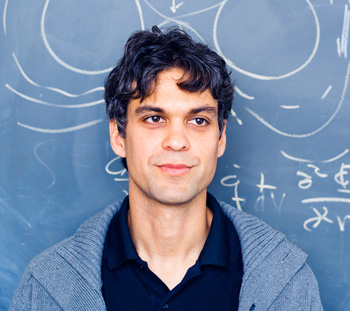Enrico Ramirez-Ruiz, a professor of astronomy and astrophysics at UC Santa Cruz, is among a select group of 50 artists and scholars who will be spending the 2014-15 academic year as fellows at the Radcliffe Institute for Advanced Study at Harvard University.
As the Mildred Londa Weisman Fellow, Ramirez-Ruiz will pursue his research in theoretical astrophysics while part of a vibrant multidisciplinary community. The Radcliffe Fellowship Program, which has an acceptance rate of just 4 percent, brings together people from around the world to work on individual projects in the arts, humanities, sciences, and social sciences. Throughout the year, these scholars, scientists, and artists will share their ideas with one another and the public through presentations, lectures, concerts, and exhibitions.
Ramirez-Ruiz is developing the conceptual framework needed to understand the violent and capricious nature of the universe. He uses computer simulations to explore transient phenomena such as collisions, mergers, and disruptions of stars, especially those involving compact objects like black holes, neutron stars, and white dwarfs.
Much of his effort during the fellowship year will be dedicated to understanding the physics of gravitational wave emission and mass transfer in the interactions between pairs of compact objects. Both black holes and neutron stars can generate copious gravitational waves when they collide and merge. Because of this, simulations of such encounters play an essential role in ongoing efforts to detect gravitational waves.
"In general, all these phenomena, from extreme matter to event horizons and gravitational waves, cannot be created in a laboratory. Instead, we have no choice but to create virtual laboratories on Earth in order to simulate all the relevant physics in large-scale computational experiments," Ramirez-Ruiz said.
He also plans to work on advanced visualization techniques for scientific communication. The cutting-edge simulations from his research group provide ideal raw material for research collaborations between digital-art students and computational science students. The simulations yield dynamic imagery with great power and beauty, which can be used to communicate research findings, inform the general public about science and the universe, and provide raw material for science curricula, documentaries, and astronomy presentations.
The Radcliffe Institute for Advanced Study is dedicated to creating and sharing transformative ideas across the arts, humanities, sciences, and social sciences. A complete list of the 2014-15 fellows, disciplines, nations, and projects is online at www.radcliffe.harvard.edu/fellows2014.



